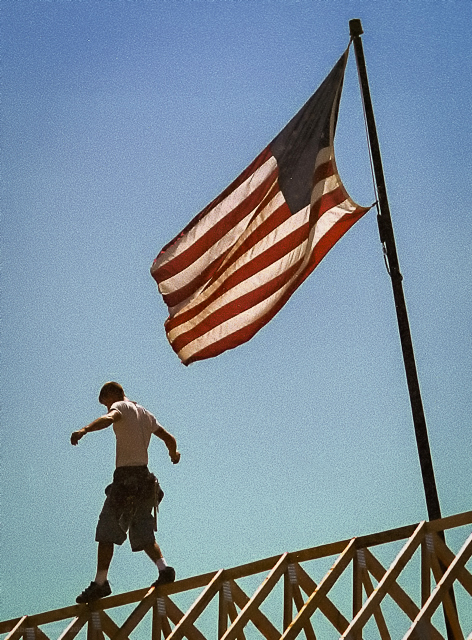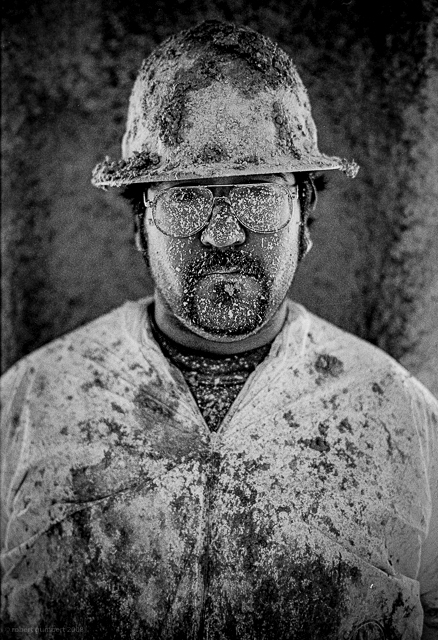It’s totally illegal
By Garrett Brown
Firing workers for raising health & safety concerns is illegal, and yet employers get away with it all the time

Since the COVID-19 pandemic hit the United States this year, health care and other essential workers still on the job have been reprimanded, disciplined, and fired by their employers for expressing concerns about their health and safety on the job. It is totally illegal to do so – yet employers have been getting away with doing exactly that for years before coronavirus.
All workers – union or non-union, documented or undocumented – have the legal right to raise health and safety issues on the job without fear of reprisal or discrimination by their employers. Moreover, all workers have the “right to refuse unsafe work” if they follow the procedures that are set out in national and state law.
Nationally, these rights are protected by the Federal Occupational Safety and Health Administration (OSHA) and its “Whistleblower Protection Program.” In California, these rights are set forth in the state’s Labor Code (Here, Here and Here) and protected by the Division of Labor Standards and Enforcement (DLSE) and its “Retaliation Complaint Investigation” unit.
All these laws have been around for decades now. Workers in various industries – facing workplace hazards as deadly as COVID-19 – have also tried to exercise their rights in the past. But the fact of the matter is that these rights have not been effectively enforced by government regulatory agencies, and very few employers have actually had to compensate and reinstate workers that have disciplined and/or fired in violation of the law.
National Non-Enforcement
Federal OSHA not only has the responsibility for investigating worker complaints and enforcing the worker protection section 11(c) of the Occupational Safety and Health Act, but also the anti-retaliation sections of more than 20 other federal laws. Fed OSHA has the responsibility for not only worker safety, but also whistleblower protection in transportation (such as railroads), environmental protection (such as oil spills), financial and health insurance fraud, and also consumer products, motor vehicle and food safety.
Staffing at Fed OSHA, especially the Whistleblower Protection Program, has been on the decline during the Trump Administration. But the program under Democrats also never had the staff and political will required to conduct enough investigations and issue enough decisions to be a deterrent to employers violating these laws.
Under the Trump Administration, especially now that hard-line corporate attorney Eugene Scalia is the Secretary of Labor, whistleblowers retaliated against in violation of two-dozen federal laws are basically on their own.
California Non-Enforcement
As bad as the federal situation is, whistleblower protection in California would be comical if it did not result in job-ending and poverty-producing reprisals, discrimination and firings by Golden State employers.
The DLSE Retaliation Complaint Investigation (RCI) unit has only five (5) investigators for a workforce of 19 million workers in more than one million worksites throughout the state. Retaliation investigations require considerable time and skill to complete because the employers involved tend to lie from the get-go of the investigation, and the investigator must find enough incriminating evidence (such as internal documents and corroborating testimony) that will “prove” retaliation and get beyond the usual “he said, she said” stalemate.
The abysmal performance of the California RCI has been documented annually in the “Federal Annual Monitoring and Evaluation” (FAME) reports conducted by Fed OSHA. The Feds conduct a “comprehensive” investigation in one year, a “follow-up” investigation the next year, and then start the sequence again.
The FAME reports cover federal fiscal years – starting October 1st of one year and ending on September 30th of the following calendar year – and are usually issued six months after the September date. The two most recent FAME reports on California’s whistleblower protection were issued in early 2018 (comprehensive) and in early 2019 (follow-up).
The last FAME report indicated the following head-spinning performance of California’s RCI:
- The percentage of retaliation investigations completed within 90 days (the federal benchmark) = 4%
- The average number of calendar days needed to complete a retaliation investigation in California = 588 days
- The percent of retaliation investigations in California that are closed as “non-meritorious” = 81%
This last FAME report (issued in early 2019) noted deficiencies that were also the subject of repeated earlier reports:
- The RCI “does not have an updated whistleblower investigation manual” that is at least as effective as the federal investigation unit;
- In 68% of reviewed RCI case files, “there was no evidence that DLSE referred the retaliation claim to Cal/OSHA;”
- In 96% of reviewed RCI case files, “there was no evidence that DLSE conducted a screening interview and created a Memorandum of Interview based on information learned during the screening interview;”
- In 53% of reviewed RCI case files “there was no proof of receipt that the Complainant or Respondent received a closing letter;” and
- In 33% of reviewed RCI case files, “there is no evidence that a DLSE supervisor reviewed and approved the decision to administratively close complaints.”
For workers in California, perhaps even more than in states covered by Federal OSHA, their right to protection against illegal retaliation and reprisals from their employers basically does not exist.
Worker protection in the real world

Photo: © Robert Gumpert 2000
Since workers are on their own when it comes to protecting their freedom of speech and right to refuse unsafe work on the job, other strategies have to be explored and adopted to fight the illegal acts against them. This has always been the case, but, in the COVID era, it becomes even more important.
Work with your union: Workers who have a union in their workplace (less than 7% in the private sector now) have the opportunity to file grievances and have the union represent them in grievance and arbitration hearings. Some unions will file legal action on behalf of their members to gain reinstatement and back wages if the grievance and arbitration routes fail.
Notify the news media: As indicated in the articles in the New York Times and Washington Post above, the news media is interested in covering what is happening to health care and other essential workers in the midst of the pandemic. Most articles have been sympathetic to workers still on the job saving lives and keeping people fed and supplied with the basics. “Naming and shaming” employers engaged in violating workers’ rights via the media has proven successful in the past in getting some workers back on the job and their rights respected.
Notify your elected officials: While we all know some federal, state and local officials that have forgotten who they are paid to work for, there are others who have championed the cause of workers who have suffered illegal reprisals and terminations. Public pressure on employers via elected officials has proven effective in cases in the past, and will likely be so now in the midst of so much pain and suffering in society.
So workers whose rights are violated should definitely file retaliation complaints with the appropriate government agency. They should also understand that the chances for success via that route alone are very, very slim, and would take months and months to be realized. But there are other routes – always best working collectively with coworkers in legally-protected “concerted activity” – that workers can take to get their jobs back, to prevent employer discrimination, and protect the rights of all.
…